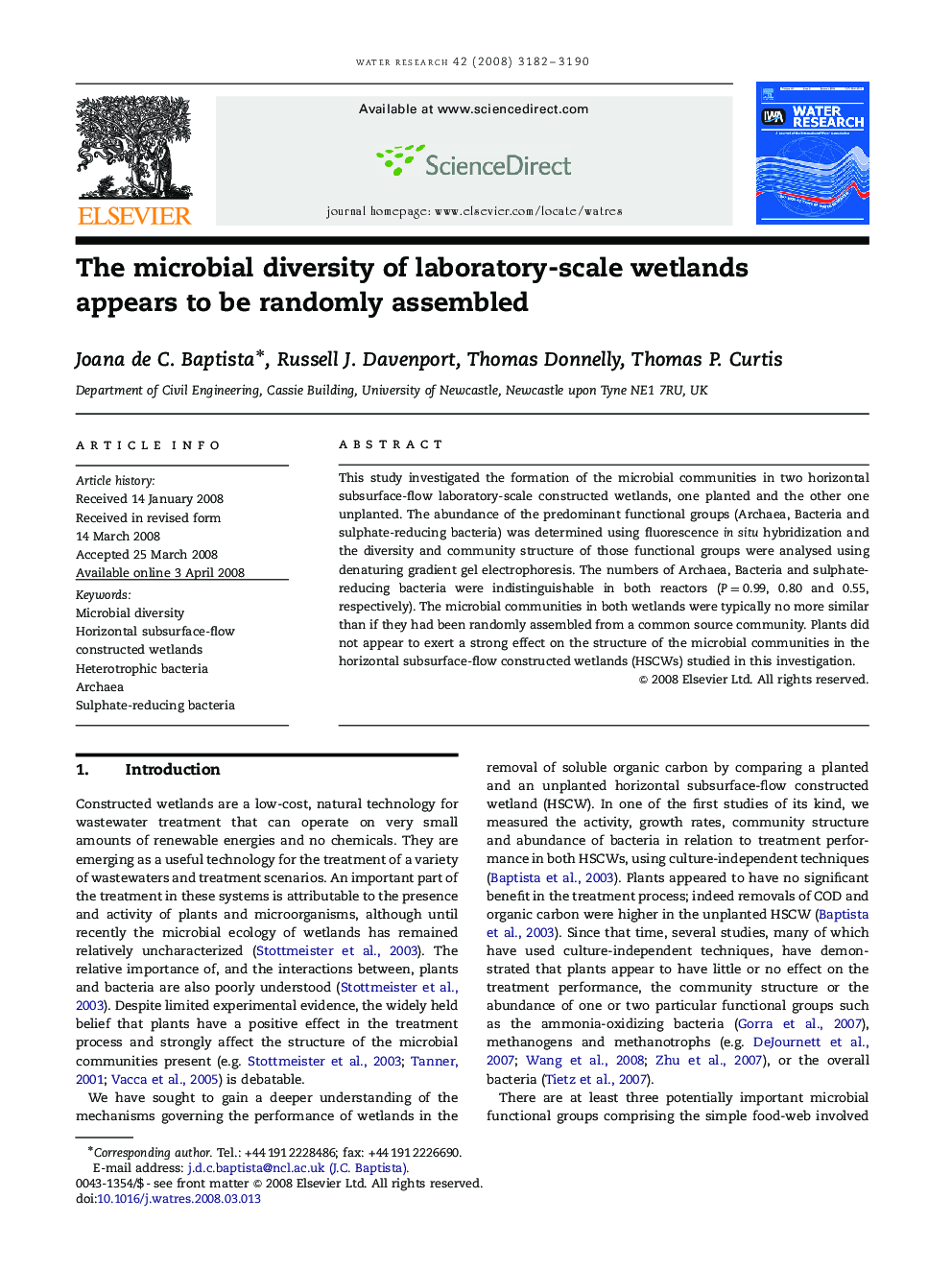| Article ID | Journal | Published Year | Pages | File Type |
|---|---|---|---|---|
| 4485591 | Water Research | 2008 | 9 Pages |
This study investigated the formation of the microbial communities in two horizontal subsurface-flow laboratory-scale constructed wetlands, one planted and the other one unplanted. The abundance of the predominant functional groups (Archaea, Bacteria and sulphate-reducing bacteria) was determined using fluorescence in situ hybridization and the diversity and community structure of those functional groups were analysed using denaturing gradient gel electrophoresis. The numbers of Archaea, Bacteria and sulphate-reducing bacteria were indistinguishable in both reactors (P=0.99, 0.80 and 0.55, respectively). The microbial communities in both wetlands were typically no more similar than if they had been randomly assembled from a common source community. Plants did not appear to exert a strong effect on the structure of the microbial communities in the horizontal subsurface-flow constructed wetlands (HSCWs) studied in this investigation.
